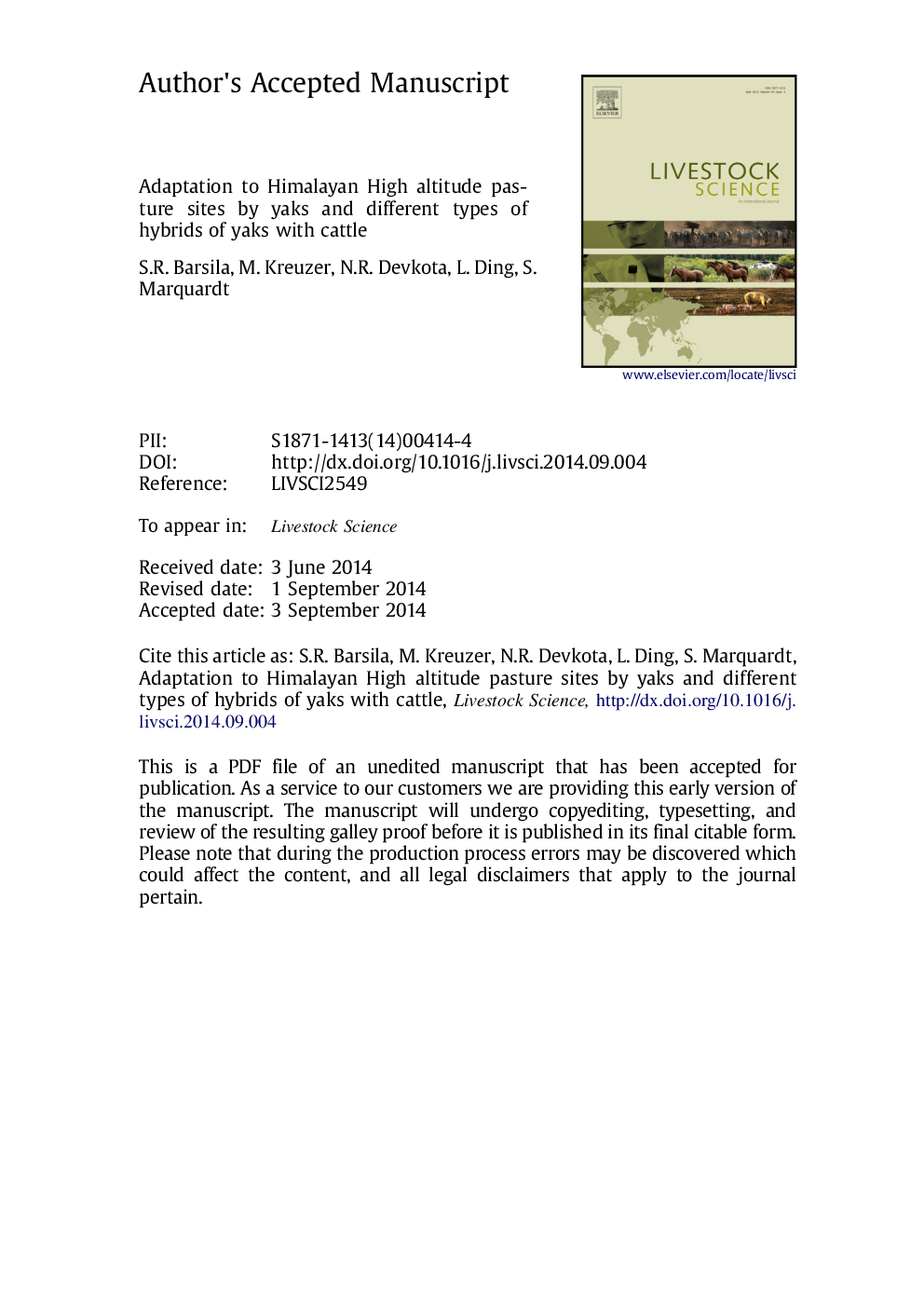| کد مقاله | کد نشریه | سال انتشار | مقاله انگلیسی | نسخه تمام متن |
|---|---|---|---|---|
| 5790141 | 1553963 | 2014 | 36 صفحه PDF | دانلود رایگان |
عنوان انگلیسی مقاله ISI
Adaptation to Himalayan high altitude pasture sites by yaks and different types of hybrids of yaks with cattle
دانلود مقاله + سفارش ترجمه
دانلود مقاله ISI انگلیسی
رایگان برای ایرانیان
موضوعات مرتبط
علوم زیستی و بیوفناوری
علوم کشاورزی و بیولوژیک
علوم دامی و جانورشناسی
پیش نمایش صفحه اول مقاله

چکیده انگلیسی
Yaks are well adapted to the harsh climate and hypoxia occurring under high altitude grazing conditions of the Himalayan Mountains. However, it is unclear to which degree different types of hybrids of yaks and cattle, common in the Himalaya, tolerate these conditions and how they perform and behave under these circumstances. Six multiparous females, each of yaks (Bos grunniens) and two hybrid types (Bos taurus (â)ÃB. grunniens (â) (Dimjos) and B. grunniens (â)ÃBos indicus (â) (Urangs)) were investigated at a high (4700Â m, August) and a medium altitude pasture site (3050Â m, October). After 1 week of adaptation, at both pasture sites milk yield and composition, body weight, metabolic traits and movement behaviour were measured during 6 days and analysed for effects of pasture site, genotype and interaction. Blood haemoglobin was high in yaks, intermediate in Dimjos and lowest in Urangs. At the high altitude pasture site, yaks had the lowest and Urangs had the highest blood lactate concentrations. These differences disappeared at the medium altitude site. Heart rate was higher and heart rate variability smaller at the high altitude site. Respiration rate was highest in the evening and rectal temperature in the morning in all groups at the high altitude site, both being highest in yaks. At the high altitude site, the animals spent overall more time (min/24Â h) standing (931) and less time lying (333) than at the medium altitude site (608 and 603, respectively), with the least altitude differences found in the yaks. Yield of energy-corrected milk (kg/day) was overall highest in Dimjos (2.7 vs. 1.9 and 1.9 in yaks and Urangs, respectively) and declined from high (3.1) to medium altitude site (1.3); this probably influenced by stage of lactation and forage quality. The same trend was found for milk fat and protein yields. Yak milk had the highest fat content, especially at the medium altitude site. The results showed that both hybrid types were less tolerant to the conditions at the high altitude pasture site than yaks. Among hybrids, Dimjos were superior to Urangs in their tolerance of the particular pasture conditions, and also showed a better performance than the Urangs at both pasture sites.
ناشر
Database: Elsevier - ScienceDirect (ساینس دایرکت)
Journal: Livestock Science - Volume 169, November 2014, Pages 125-136
Journal: Livestock Science - Volume 169, November 2014, Pages 125-136
نویسندگان
S.R. Barsila, M. Kreuzer, N.R. Devkota, L. Ding, S. Marquardt,